Related Research Articles
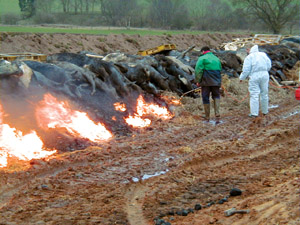
The outbreak of foot-and-mouth disease in the United Kingdom in 2001 caused a crisis in British agriculture and tourism. This epizootic saw 2,000 cases of the disease in farms across most of the British countryside. Over 6 million cows and sheep were killed in an eventually successful attempt to halt the disease. Cumbria was the worst affected area of the country, with 893 cases.
The Pirbright Institute is a research institute in Surrey, England, dedicated to the study of infectious diseases of farm animals. It forms part of the UK government's Biotechnology and Biological Sciences Research Council (BBSRC). The institute employs scientists, vets, PhD students, and operations staff.
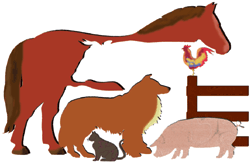
The Center for Veterinary Medicine (CVM) is a branch of the U.S. Food and Drug Administration (FDA) that regulates the manufacture and distribution of food, food additives, and drugs that will be given to animals. These include animals from which human foods are derived, as well as food additives and drugs for pets or companion animals. CVM is responsible for regulating drugs, devices, and food additives given to, or used on, over one hundred million companion animals, plus millions of poultry, cattle, swine, and minor animal species. Minor animal species include animals other than cattle, swine, chickens, turkeys, horses, dogs, and cats.
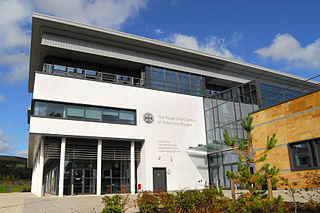
The Royal (Dick) School of Veterinary Studies, commonly referred to as the Dick Vet, is the University of Edinburgh's vet school. It is part of the College of Medicine and Veterinary Medicine.
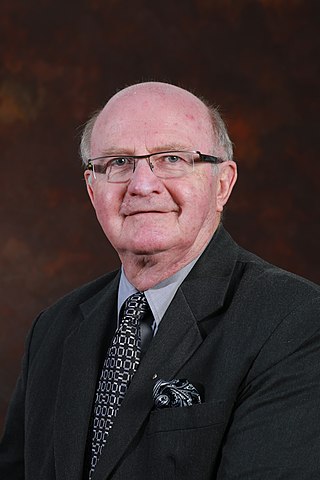
Lorne Allan Babiuk, is a Canadian scientist specializing in immunology, pathogenesis, virology, molecular virology, and vaccinology. He is the Vice-President of Research at the University of Alberta and the former Director of the Vaccine and Infectious Disease Organization at the University of Saskatchewan. Dr Babiuk holds the Canada Research Chair in Vaccinology and Biotechnology and is Chair of the Board for Pan-Provincial Vaccine Enterprise (PREVENT), a vaccine development company.

Louping-ill is an acute viral disease primarily of sheep that is characterized by a biphasic fever, depression, ataxia, muscular incoordination, tremors, posterior paralysis, coma, and death. Louping-ill is a tick-transmitted disease whose occurrence is closely related to the distribution of the primary vector, the sheep tick Ixodes ricinus. It also causes disease in red grouse, and can affect humans. The name 'louping-ill' is derived from an old Scottish word describing the effect of the disease in sheep whereby they 'loup' or spring into the air.
Harold William Bennetts CBE was a veterinary surgeon known for his ground-breaking research into diseases and pathogens of livestock, especially the toxic effects of some native Australian plants.
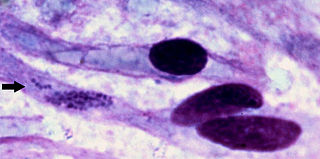
Heartwater is a tick-borne rickettsial disease. The name is derived from the fact that fluid can collect around the heart or in the lungs of infected animals. It is caused by Ehrlichia ruminantium —an intracellular Gram-negative coccal bacterium. The disease is spread by various Amblyomma ticks, and has a large economic impact on cattle production in affected areas. There are four documented manifestations of the disease, these are acute, peracute, subacute, and a mild form known as heartwater fever. There are reports of zoonotic infections of humans by E. ruminantium, similar to other Ehrlichia species, such as those that cause human ehrlichiosis.

Andrea Nolan, is Professor of Veterinary Pharmacology and Principal & Vice Chancellor of Edinburgh Napier University. In 1999, she was the first woman ever appointed to head a British veterinary school.

The Edinburgh Science Triangle (EST) is a multi-disciplinary partnership between universities, research institutes, the National Health Service, science parks, the national economic development agency Scottish Enterprise, and central and local government in Edinburgh and neighbouring council areas. The three points of the "triangle" are Livingston in West Lothian, Musselburgh in East Lothian, and the Easter Bush campus in Midlothian.
Brian Derek Perry, OBE is a British veterinary surgeon and epidemiologist renowned for the integration of veterinary epidemiology and agricultural economics, as a tool for disease control policy and strategy development, and specialised in international agricultural development. He is an Honorary Professor at the University of Edinburgh, a Visiting Professor at the Nuffield Department of Clinical Medicine, University of Oxford.

The Roslin Institute is an animal sciences research institute at Easter Bush, Midlothian, Scotland, part of the University of Edinburgh, and is funded by the Biotechnology and Biological Sciences Research Council.

Sydney Dodd, FRCVS, was a British veterinary surgeon and scientist. He contributed to the development of bacteriology and protozoology in England, South Africa and Australia. Dodd established a research station in Queensland that was to become the Animal Research Institute, and he was the first lecturer in veterinary bacteriology at the University of Sydney. He became one of the foremost bacteriologists in Australia.
The Global Alliance for Livestock Veterinary Medicines (GALVmed), formerly the Global Alliance for Livestock Vaccines (GALV), is a not-for-profit livestock health product development and access partnership. It operates as a public-private partnership and a UK registered charity headquartered in Edinburgh.

Sir Thomas Dalling was a Scottish veterinarian and lifelong champion of veterinary research and education.

John McDougal Russell Greig CBE FRSE MRCVS was a Scottish veterinarian who was Director of the Moredun Research Institute from 1930 to 1954. He is noted for the development of several important animal vaccines: Enzootic abortion in ewes; Braxy and Louping ill. His work on milk effectively created "clean milk" for the first time in Britain.
Gopal Dhinakar Raj is an Indian veterinary scientist, an academic and the project director of the Translational Research Platform for Veterinary Biologicals, a partnership program between the Department of Biotechnology and the Tamil Nadu Veterinary and Animal Sciences University. Known for the development of diagnostic test kits for animal and poultry diseases such as Leptospirosis and Egg drop syndrome, Raj is a member of the DBT Task Force on Animal Biotechnology. The Department of Biotechnology of the Government of India awarded him the National Bioscience Award for Career Development, one of the highest Indian science awards, for his contributions to biosciences in 2007.
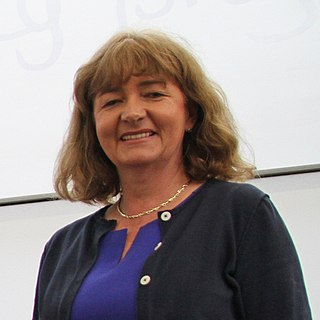
Julie Lydia Fitzpatrick is a Scottish scientist and academic. She is the CEO of Moredun Research Institute and Scotland's part-time Chief Scientific Advisor. She attended Scientific Advisory Group for Emergencies meetings in that role.
Delia Grace is an epidemiologist and a veterinarian. Grace joined the University of Greenwich in May 2020 as Professor of Food Safety Systems at the Natural Resources Institute. She is also Joint Appointed Scientist, Animal and Human Health Program at the International Livestock Research Institute (ILRI), Nairobi, Kenya.
The National Veterinary Research Institute (NVRI) is a research institute in Nigeria that was established in 1924 and has the mandate to conduct research into how to ably identify, treat and control animal diseases as well as the development of vaccines for such and training and the provision of support services to livestock and poultry farmers. The institute is under the supervision of Federal Ministry of Agriculture and Rural Development. The chief executive is Maryam Muhammad, a veterinary doctor with research interests in the molecular epidemiology of Salmonella in poultry, public health and environment and development.
References
- ↑ National Public Bodies Directory, the Scottish Government